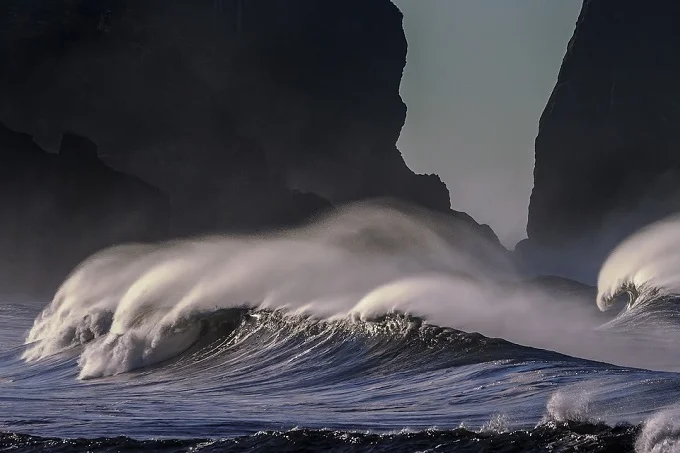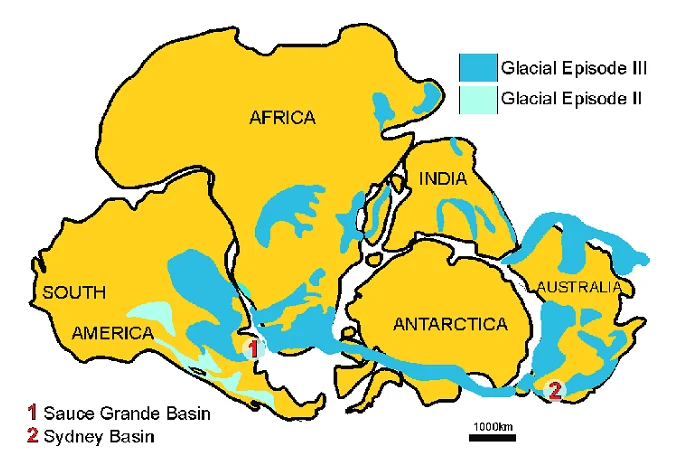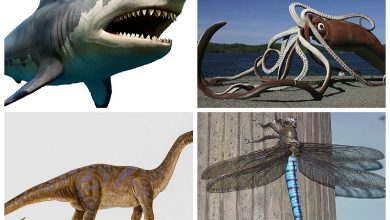Water World: What was the Earth like more than 3 billion years ago?

Evidence suggesting a worldwide ocean once covered the whole surface of the Earth has been discovered by researchers. This would have transformed the globe into a “water world” more than three billion years ago. Not only does this finding assist scientists in comprehending where and how the first single-celled life originated on Earth, but it also helps scientists identify which exoplanets have the potential to support human habitation.
What information does the scientific community have on the state of the Earth three billion years ago, and on what grounds do astronomers intend to look for planets that could one-day support life?
What, precisely, did the research conducted by scientists uncover?
The condition of the planet and the events that took place on it three billion years ago are the subject of a great deal of debate among scientists. This is partly due to the fact that very few geological monuments from this period have been preserved on the surface of the Earth.
On the other hand, there are a number of areas in which old rocks are located quite near to the surface. One of these places is Panorama, a desolate and scarcely inhabited region in Western Australia. It was in this region that researchers from the University of Colorado were able to successfully retrieve core samples that dated back around 3.24 billion years.
In this region, a plate that, during the Archaean epoch, was submerged under the ocean floor is now rising to the surface. Scientists took use of this fact to calculate the number of different forms of oxygen that its rocks contain. These oxygen types build in minerals when rocks come into contact with seawater. Specifically, they investigated the relative abundances of two isotopes in more than one hundred samples. These isotopes were light oxygen-16 and somewhat heavier oxygen-18.
According to the findings of the investigation, the total quantity of these isotopes greatly surpasses the amount that is found in rocks that are now being washed by seawater. The findings of this study have led scientists to the conclusion that about 3.24 billion years ago, almost all of the Earth’s surface was covered in water, and the existence of land on the planet was very rare.
According to Benjamin Johnson, who was the primary author of the research, “without continents over the ocean, the oxygen value would be different from what it is now, and this is precisely what we observed.”
The findings of the study do not, however, imply that the Earth was completely devoid of land during this period. The investigators believe that during this period of the development of the planet, “microcontinents” could have existed on its surface. These “microcontinents” rose above the surface of the ocean at a great distance from one another.
The study, on the other hand, disproves, with a very high degree of likelihood, the existence of supercontinents such as the hypothetical Vaalbara and enormous continents with a lot of fertile soil, such as those that now dominate the surface of the Earth.
During the Archean period, which occurred between 3.6 and 2.8 billion years ago, it is believed that the first supercontinent on Earth, known as Vaalbara, was in existence. According to the theory of experts, its development started 3.6 billion years ago and continued until 3.1 billion years ago. It was completed at that time. About 2.5 billion years ago, the supercontinent fractured into a number of smaller continents.
“I envisage an image akin to what the Galapagos Islands appear like when viewed from the west: enormous expanses of water to the north and south with little rocky volcanic islands barely rising above the surface of the ocean,” says Johnson. “This is how I envision the landscape of the islands.”
However, the authors of the research point out that there is still the possibility of alternative explanations for the very high level of oxygen isotopes found in the rocks of that period. If the formation of continents occurred considerably more slowly than scientists assume they did, then the same chemical features may have emerged.
There is also the possibility that the continental clays, which are now rock-like substances, did not first originate on land but rather in the ocean.
Everything that existed on Earth other than the oceans
There is a lot of disagreement among scientists on the many hypotheses that have been put up regarding how and when the first continents originated on Earth. There is a hypothesis floating about those enormous tracts of land on the surface of the globe came into being as a consequence of a reduction in the rate at which heat was escaping from the interior of the Earth.
The oldest continental material that is still around today is around 4 billion years old. This means that it developed approximately 600 million years after the planet itself was created. If what you are saying is correct, it would have begun before the junk that was left over from the creation of the solar system began to bombard Earth and before water first emerged on the planet. However, despite their best efforts, scientists have not been able to uncover convincing evidence that other continents existed prior to Gondwana.
Gondwana
The majority of academics agree that the Gondwana supercontinent, which existed before the Jurassic period and split up about 180 million years ago, dominated the Earth around 500 million years ago. This occurred at the same time as the end of the Triassic period.

Africa, South America, Antarctica, Australia, and New Zealand were all a part of the Gondwana supercontinent, as were Arabia, Madagascar, and Hindustan. At the close of the Precambrian era, a break occurred in the Rodinia supercontinent, which led to the formation of this feature.
On Earth, the Archean geological era, which lasted from 2.5 billion to 4 billion years ago, came to an end about 3 billion years ago, around the time period outlined by the authors of the study. It is thought that at that time, there was almost no free oxygen in the atmosphere of the Earth and that the quantity of greenhouse gases was several times larger than the values that are used now.
The first signs of life arose on Earth around the start of the Archean period, and by three billion years ago, the preponderant forms of life on Earth were cyanobacterial mats (stromatolites) and archaea.
Stromatolites had the appearance of stones, but closer inspection revealed that they were really aggregates of live bacteria. They contained both aerobic and anaerobic bacteria that, via the process of photosynthesis, turned water and sunlight into glucose, a basic form of sugar. Oxygen was produced as a by-product of this operation that was carried out.
In the Archean period, which occurred around 3.2 billion years ago, scientists think that current plate tectonics, together with its subduction zones, distribution centers, earthquakes, and all of the other characteristics that we are familiar with, most likely had its start.
This is shown by the fact that scientists in the southwestern region of Greenland discovered fragments of old rocks that belonged to the Earth’s crust and had ages ranging from 3.9 billion to 2.5 billion years. The duration that each sample has been a component of the Earth’s crust was determined by the researchers by analyzing the quantity of neutrons present in hafnium atoms.
The ratio of different hafnium isotopes in surface rocks is subject to vary as a result of melting and recycling. The quantity of hafnium that is found in rocks that are less than 3.2 billion years old is discovered to be considerably different from the amount that is found in rocks that are older. Plate tectonics on Earth started about this period, which provides scientists with an explanation for this discrepancy on the planet.
At the beginning of the Archean epoch, one idea proposes that material was probably brought straight to the surface of the Earth by vertical jets of very hot magma in the mantle. This would have resulted in the formation of the first portions of the continental crust.
The mantle began to cool over time between 3.2 and 3.5 billion years ago, which resulted in a decrease in the number of hot magma plumes. The investigators think that stable convection cells emerged in the mantle and started controlling plate motions and subduction, and that plate tectonics started shaping the surface of the Earth.
Since that time, the majority of the newly formed crust has broken through the surface of the planet in those locations on the globe that are home to distribution centers as well as subduction zones. The Mariana Subduction Zone is a good example; it is the location where the Mariana Island Arc was born and it is also the site of the Mariana Trench, which is the deepest part of the ocean.




